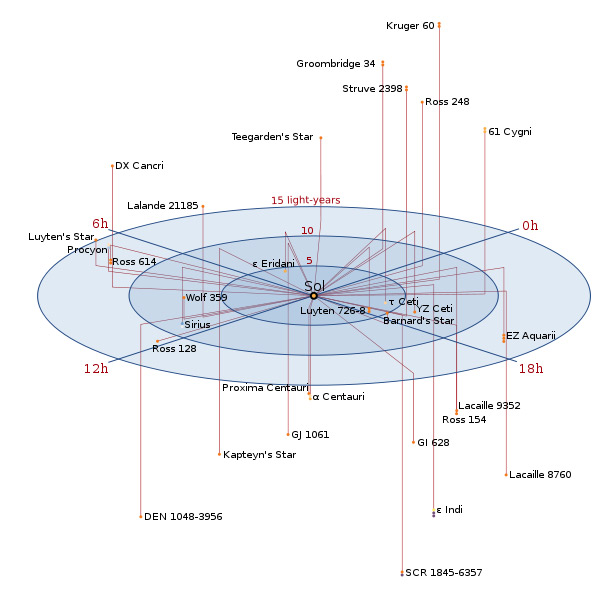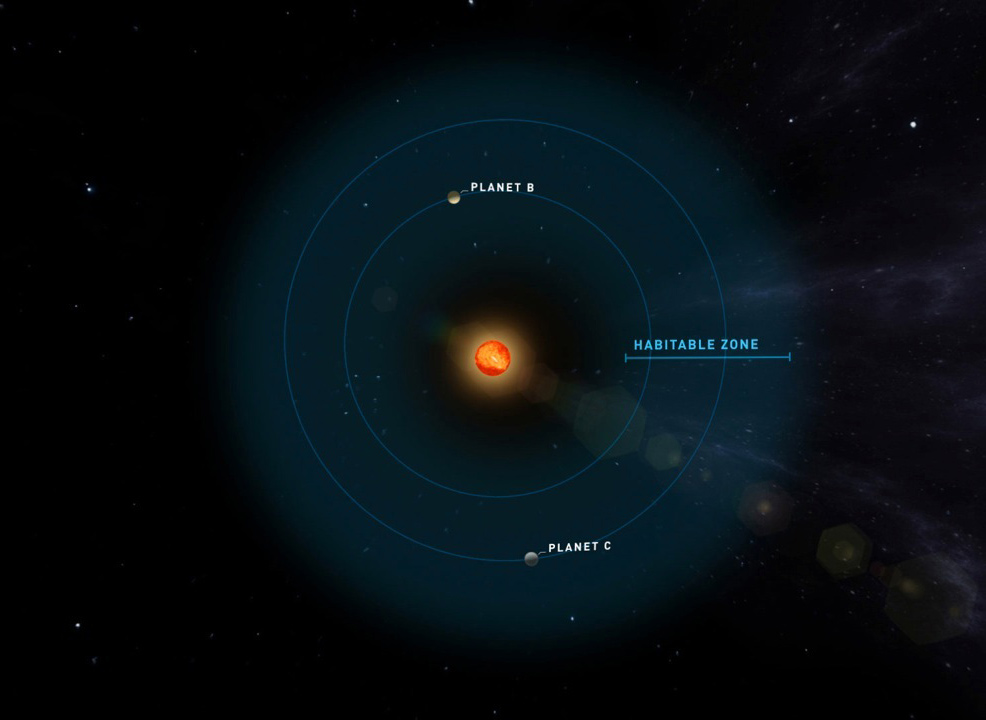
19th June 2019 Two potentially Earth-like planets found just 12.5 light years away Astronomers have discovered two new Earth-sized planets orbiting in the habitable zone of Teegarden's star – one of the smallest and nearest known stars.
A research team led by the University of Göttingen, Germany, has discovered two new Earth-sized planets in one of the closest neighbouring star systems. "Teegarden's star" is just 12.5 light years away, but was only spotted in 2003, using asteroid-tracking data collected years earlier. This M-type red dwarf is one of the smallest known stars, with a mass only 8% that of our own Sun and a relatively cool temperature of 2,700 °C (4,900 °F). For this latest study, the scientists observed the star for three years, as part of the CARMENES project – a ground-based telescope in Spain that is looking for "blue Earths around red dwarfs." The project was specifically designed to spot planets around the lightest stars, by using the "radial velocity" method that detects oscillations in stars caused by any planets orbiting them. The Göttingen team published their results in the journal Astronomy and Astrophysics and the data clearly shows the existence of two planets. "The two planets resemble the inner planets of our Solar System," says lead author Mathias Zechmeister at Göttingen's Institute for Astrophysics. "They are only slightly heavier than Earth and are located in the so-called habitable zone, where water can be present in liquid form." Planet B has been measured at 1.05 Earth masses, with an orbital period of 4.9 days. Planet C is 1.11 Earth masses, orbiting every 11.4 days. This may seem incredibly fast compared to the 365 days we experience here on Earth – and even Mercury takes 88 days – but Teegarden's smaller size and cooler temperature means that its habitable zone is much closer to the star.
The astronomers suspect that the two planets could be part of a larger system. "Many stars are apparently surrounded by systems with several planets," explains co-author Professor Stefan Dreizler. Teegarden's star is the smallest star where researchers have so far been able to measure the weight of a planet directly. "This is a great success for the CARMENES project, which was specifically designed to search for planets around the lightest stars," says Professor Ansgar Reiners, also of the University of Göttingen and one of the scientific directors of the project. Although planetary systems around similar stars are known, they have always been detected using the "transit" method – when planets have to pass visibly in front of the star and darken it for a moment, which only happens in a very small fraction of all planetary systems. Such transits have not yet been found for the new planets. But the system is at a special place in the sky: from Teegarden's star, you could see the planets of our Solar System passing in front of the Sun. "An inhabitant of the new planets would therefore have the opportunity to view the Earth using the transit method," says Reiners. The new exoplanets are the 10th and 11th discovered by the team.
Comments »
If you enjoyed this article, please consider sharing it:
|








